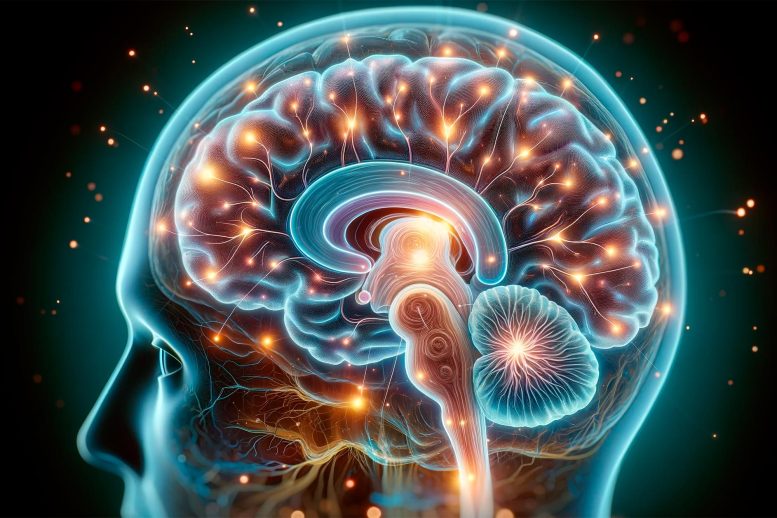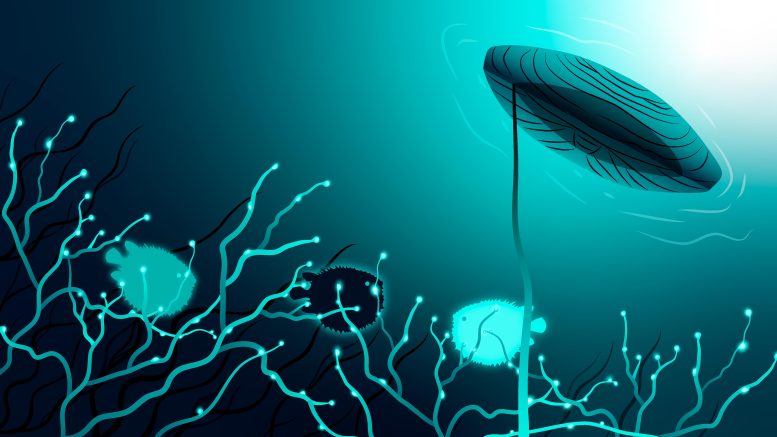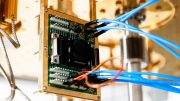
A collaborative study reveals that the cerebellar nuclei play a crucial role in associative learning, challenging previous beliefs that focused on the cerebellar cortex. Through innovative techniques like optogenetics and electrical cell measurements, the research shows how these nuclei contribute to learning processes, with implications for human neuroscience.
Our Cerebellar Nuclei Are More Important Than Initially Thought
Associative learning was always thought to be regulated by the cortex of the cerebellum, often referred to as the “little brain”. However, new research from a collaboration between the Netherlands Institute for Neuroscience, Erasmus MC, and Champalimaud Center for the Unknown reveals that actually the nuclei of the cerebellum make a surprising contribution to this learning process.
Understanding Associative Learning
If a teacup is steaming, you’ll wait a bit longer before drinking from it. And if your fingers get caught in the door, you’ll be more careful next time. These are forms of associative learning, where a positive or negative experience leads to learning behavior. We know that our cerebellum is important in this form of learning. But how exactly does this work?
Research Methodology
To investigate this issue, an international team of researchers in the Netherlands and Portugal, consisting of Robin Broersen, Catarina Albergaria, Daniela Carulli, with Megan Carey, Cathrin Canto, and Chris de Zeeuw as senior authors, looked at the cerebellum of mice. The researchers trained mice with two different stimuli: a brief flash of light, followed by a gentle puff of air to the eye. Over time, the mice learned that there was an association between the two, leading them to pre-emptively close their eyes when they saw the flash of light. This behavioral paradigm has been used for many years to explore how the cerebellum works.
The Cerebellum’s Structure and Function
If you look at the cerebellum, you can distinguish two major parts in it: the cerebellar cortex, or the outer layer of the cerebellum, and the cerebellar nuclei, the inner part. These parts are interconnected. The nuclei are groups of brain cells that receive all kinds of information from the cortex. These nuclei in turn have connections to other brain areas that control movements, including eyelid closures. Essentially, the nuclei are the output center of the cerebellum.

An artistic interpretation of the research. The bright algae represent mossy fibers — brain connections that interact with pufferfish, symbolizing the cerebellar nuclei cells that respond variably to stimuli. The boat’s timber patterns above suggest the structure of the cerebellar cortex, linked to the depths by an anchor line, portraying the connection between the cortex and nuclei. Credit: Rita Félix
Robin Broersen: “The cerebellar cortex has long been regarded as the primary player in learning the reflex and timing of the eyelid closure. With this study, we show that well-timed eyelid closures can also be regulated by the cerebellar nuclei. Both laboratories were working on similar research topics and when we realized the synergy of our work, we decided to start an international collaboration resulting in the present article.”
The cerebellum is influenced by other brain regions via different connections, the so-called mossy fibers and the climbing fibers. In the experiment described above, it is thought that the mossy fibers carry information from the light, and that the climbing fibers convey information related to the air puff. This information then converges in the cortex and nuclei of the cerebellum. The Dutch team investigated the effect of associative learning on these connections to the nuclei and found that the mossy fibers had made stronger connections to the nuclei in the mice showing associative learning.
Activation With Light
Meanwhile, the Portuguese team tested the capacity for learning in the cerebellar nuclei using optogenetics — a method that uses light to control cells. Catarina Albergaria: “Instead of using a regular light flash to train mice, we directly stimulated brain connections with light while pairing it with an air puff to the eye. This caused the mice to close their eyelids at the right times, showing that the cerebellar nuclei can support well-timed learning. To ensure this learning was actually happening in the nuclei, we repeated the experiments in mice with an inactivated cerebellar cortex.”
Cathrin Canto: “While learning, connections between brain cells change. Still, it wasn’t clear where in the cerebellum these changes were taking place. Therefore, we looked at what happens to the mossy fibers and connections from the cortex while learning. We found that in mice that learned — but not ones that didn’t — the connections from the mossy fibers and from the cortex to the nuclei became stronger.”
State-of-the-Art Technology
Canto continues: “We also visualized what happens inside the cell, by taking electrical measurements inside the nuclear cells of a living mouse. You can imagine that these cells are very small, 10 to 20 µm. That’s smaller than the diameter of a human hair. Using an ultra-thin tube with an electrode, we were able to record the electrical activity inside the cells while the mouse performed the task, an enormous technical challenge.”
“In trained animals, light exposure caused the electrical activity inside the nucleus cells to change: the cells became more active the closer you got to the air puff in terms of timing. Essentially, the cells were prepared for what was to come and could therefore make their electrical activity precise enough to control the eyelid even before the puff had taken place.”
Mouse Versus Human
Broersen: “Although this research uses mice, the general anatomy of the cerebellum is similar between mice and humans. While humans have many more cells, we expect the connections between cells to be organized in the same way.
“Our results contribute to a better understanding of how the cerebellum works and what happens during the learning process. This also leads to more knowledge about how damage to the cerebellum affects functioning, which may help patients in the future. By stimulating the connections to the nuclei using deep brain stimulation, it might be possible to learn new motor skills.”
Reference: “Synaptic mechanisms for associative learning in the cerebellar nuclei” by Robin Broersen, Catarina Albergaria, Daniela Carulli, Megan R. Carey, Cathrin B. Canto and Chris I. De Zeeuw, 20 November 2023, Nature Communications.
DOI: 10.1038/s41467-023-43227-w









Be the first to comment on "Rethinking the “Little Brain” – The Surprising Learning Power of Cerebellar Nuclei"